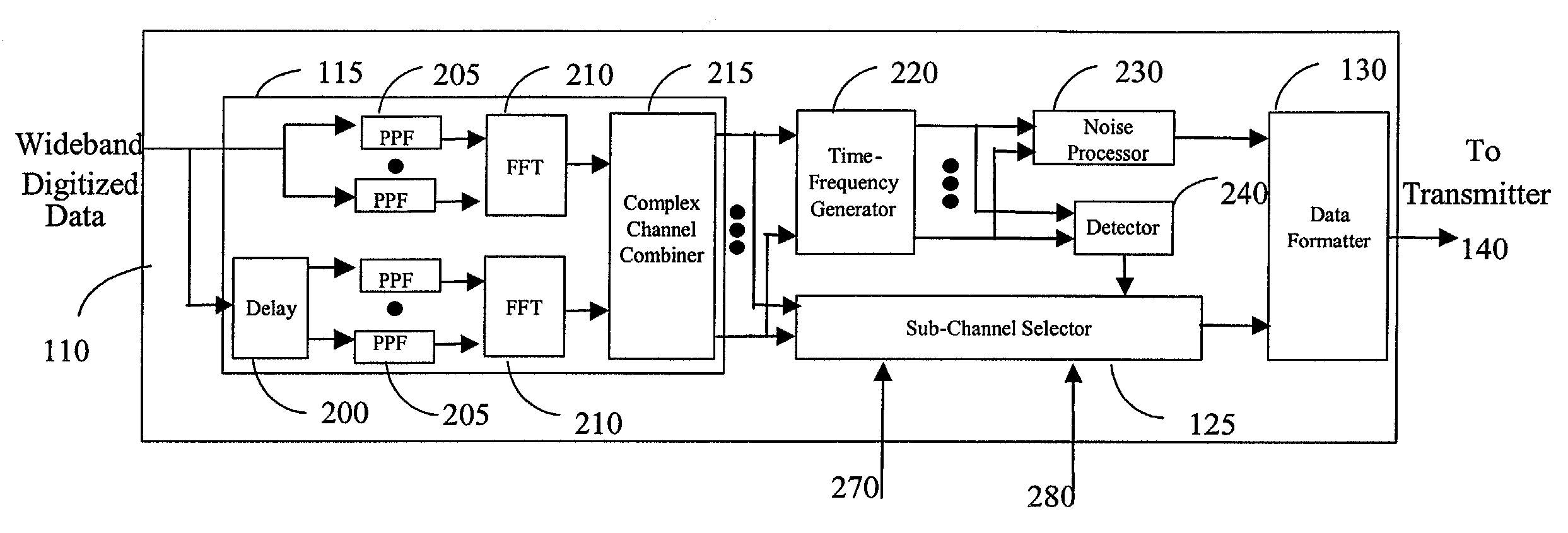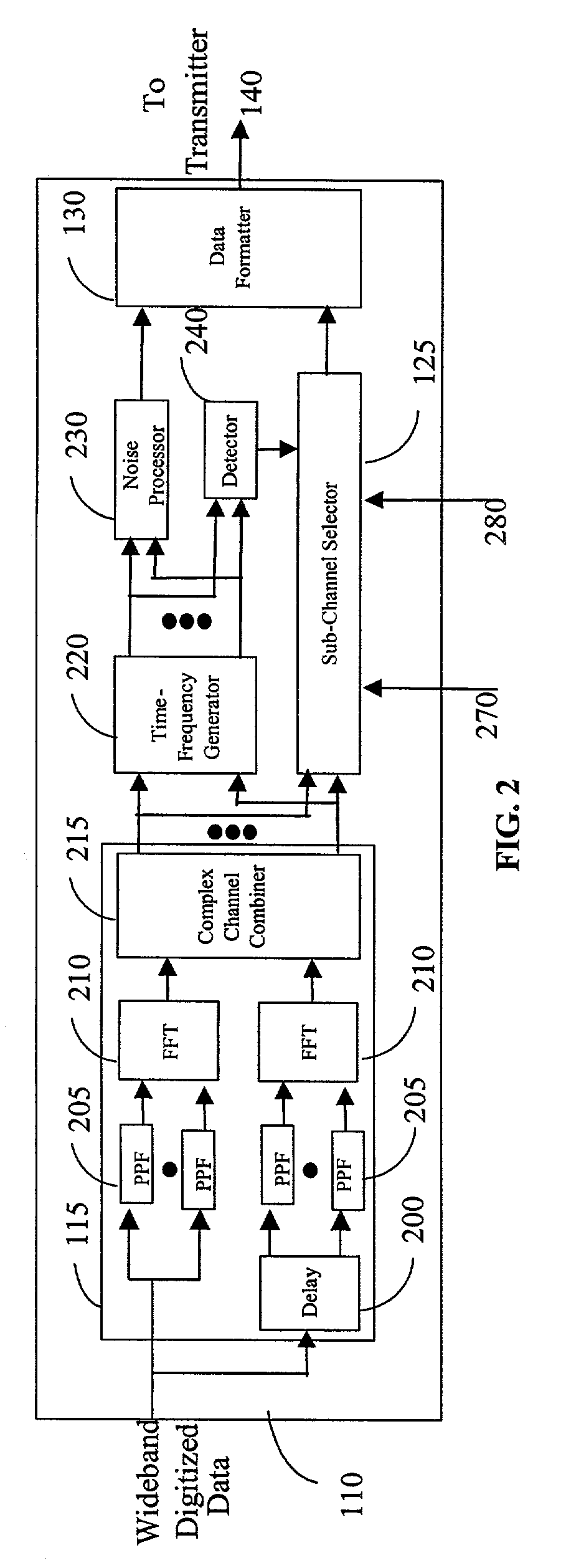Method and apparatus for adaptive signal compression
a signal compression and adaptive technology, applied in the field of signal processing, can solve problems such as system yielding significant compression, and achieve the effects of less power and bandwidth, minimal loss and distortion
- Summary
- Abstract
- Description
- Claims
- Application Information
AI Technical Summary
Benefits of technology
Problems solved by technology
Method used
Image
Examples
Embodiment Construction
[0014]The present invention preferably is used with a communication system designed to carry unknown wideband data. Transmitting a large amount of data requires great speed or substantial power. The present invention allows for a reduction in the power or speed of the system without decreasing the effective amount of data sent. The present invention improves the link efficiency in a system to provide wideband data with a minimal loss or distortion of data. In the preferred embodiment, a spectrum may contain zero, one, or more desired signals represented by a stream of wideband (digitized) data. Although signals in a spectrum are typically separated by frequency, the present invention does not require it. The present invention uses signal compression to send wideband data over a narrow transmission link. The system compresses the signal by, in part, extracting the data of interest to be transmitted. The receiving end reconstructs the original signal with minimal loss using the transm...
PUM
 Login to View More
Login to View More Abstract
Description
Claims
Application Information
 Login to View More
Login to View More - R&D
- Intellectual Property
- Life Sciences
- Materials
- Tech Scout
- Unparalleled Data Quality
- Higher Quality Content
- 60% Fewer Hallucinations
Browse by: Latest US Patents, China's latest patents, Technical Efficacy Thesaurus, Application Domain, Technology Topic, Popular Technical Reports.
© 2025 PatSnap. All rights reserved.Legal|Privacy policy|Modern Slavery Act Transparency Statement|Sitemap|About US| Contact US: help@patsnap.com



